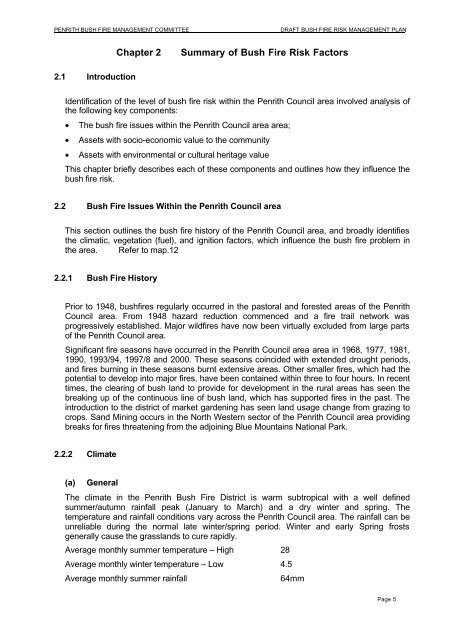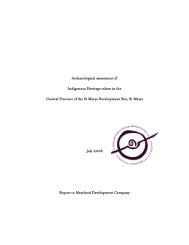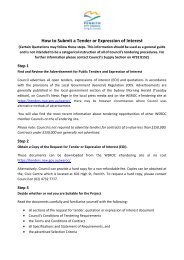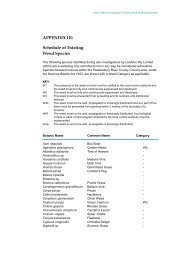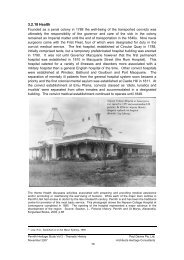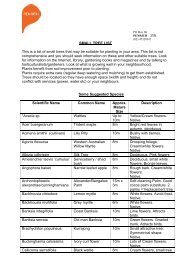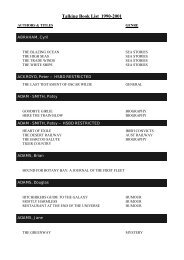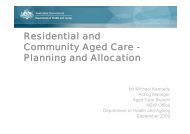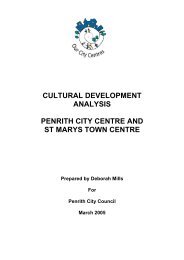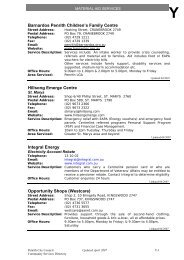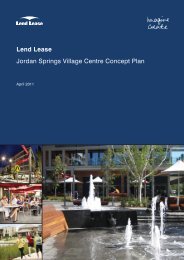Penrith Bush Fire Management Committee Bush Fire Risk ...
Penrith Bush Fire Management Committee Bush Fire Risk ...
Penrith Bush Fire Management Committee Bush Fire Risk ...
You also want an ePaper? Increase the reach of your titles
YUMPU automatically turns print PDFs into web optimized ePapers that Google loves.
PENRITH BUSH FIRE MANAGEMENT COMMITTEE DRAFT BUSH FIRE RISK MANAGEMENT PLAN<br />
2.1 Introduction<br />
Chapter 2 Summary of <strong>Bush</strong> <strong>Fire</strong> <strong>Risk</strong> Factors<br />
Identification of the level of bush fire risk within the <strong>Penrith</strong> Council area involved analysis of<br />
the following key components:<br />
• The bush fire issues within the <strong>Penrith</strong> Council area area;<br />
• Assets with socio-economic value to the community<br />
• Assets with environmental or cultural heritage value<br />
This chapter briefly describes each of these components and outlines how they influence the<br />
bush fire risk.<br />
2.2 <strong>Bush</strong> <strong>Fire</strong> Issues Within the <strong>Penrith</strong> Council area<br />
This section outlines the bush fire history of the <strong>Penrith</strong> Council area, and broadly identifies<br />
the climatic, vegetation (fuel), and ignition factors, which influence the bush fire problem in<br />
the area. Refer to map.12<br />
2.2.1 <strong>Bush</strong> <strong>Fire</strong> History<br />
Prior to 1948, bushfires regularly occurred in the pastoral and forested areas of the <strong>Penrith</strong><br />
Council area. From 1948 hazard reduction commenced and a fire trail network was<br />
progressively established. Major wildfires have now been virtually excluded from large parts<br />
of the <strong>Penrith</strong> Council area.<br />
Significant fire seasons have occurred in the <strong>Penrith</strong> Council area area in 1968, 1977, 1981,<br />
1990, 1993/94, 1997/8 and 2000. These seasons coincided with extended drought periods,<br />
and fires burning in these seasons burnt extensive areas. Other smaller fires, which had the<br />
potential to develop into major fires, have been contained within three to four hours. In recent<br />
times, the clearing of bush land to provide for development in the rural areas has seen the<br />
breaking up of the continuous line of bush land, which has supported fires in the past. The<br />
introduction to the district of market gardening has seen land usage change from grazing to<br />
crops. Sand Mining occurs in the North Western sector of the <strong>Penrith</strong> Council area providing<br />
breaks for fires threatening from the adjoining Blue Mountains National Park.<br />
2.2.2 Climate<br />
(a) General<br />
The climate in the <strong>Penrith</strong> <strong>Bush</strong> <strong>Fire</strong> District is warm subtropical with a well defined<br />
summer/autumn rainfall peak (January to March) and a dry winter and spring. The<br />
temperature and rainfall conditions vary across the <strong>Penrith</strong> Council area. The rainfall can be<br />
unreliable during the normal late winter/spring period. Winter and early Spring frosts<br />
generally cause the grasslands to cure rapidly.<br />
Average monthly summer temperature – High 28<br />
Average monthly winter temperature – Low 4.5<br />
Average monthly summer rainfall 64mm<br />
Page 5


